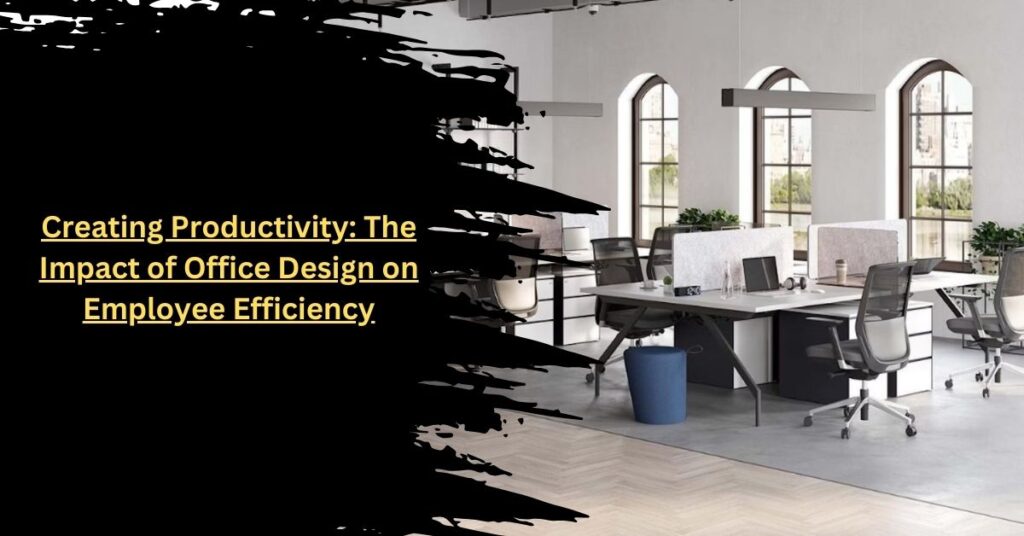Creating a productive work environment is vital for success in today’s competitive business landscape. Office design significantly affects employee efficiency, focus, morale, and job satisfaction. This article examines the link between office design and productivity, key factors that enhance efficiency, effective design examples, and tips for creating a workspace that boosts productivity.
Relationship Between Office Design and Productivity
Office design is more than just aesthetics; it encompasses the arrangement of furniture, lighting, acoustics, and even the air quality within a workspace. Studies have shown that a well-designed office can significantly boost productivity by creating an environment that supports employees’ physical and psychological needs. Conversely, a poorly designed office can lead to decreased efficiency, higher stress levels, and increased absenteeism. Understanding the elements that contribute to a productive office design is key to fostering a thriving work environment.
Key Elements of Office Design That Influence Efficiency
1. Layout and Space Utilization
An open floor plan encourages communication and collaboration, which can lead to increased innovation and faster problem-solving. However, it’s essential to balance open spaces with private areas where employees can focus without distractions. Proper space utilization ensures that every area serves a purpose, whether it’s for teamwork, individual work, or relaxation.
2. Ergonomics
Ergonomic furniture is vital for employee comfort and health. Adjustable chairs, sit-stand desks, and properly positioned monitors reduce the risk of musculoskeletal issues and fatigue. When employees are comfortable, they can maintain focus and work more efficiently.
3. Lighting
Natural light has been proven to enhance mood and energy levels, leading to increased productivity. Offices should maximize the use of natural light and complement it with adjustable artificial lighting to reduce eye strain and improve working conditions.
4. Acoustics
Noise can be a significant distraction in the workplace. Acoustic panels, soundproofing, and designated quiet zones can help manage noise levels, allowing employees to concentrate better and work more efficiently.
5. Temperature and Air Quality
A comfortable temperature and good air quality are essential for maintaining employee well-being and productivity. Proper ventilation, air purifiers, and climate control systems ensure a healthy and comfortable working environment.
The Psychological Impact of Office Environments on Employees
The design of an office has a profound psychological impact on employees. A well-designed workspace can reduce stress, enhance mood, and increase motivation. Elements such as natural light, plants, and comfortable furniture contribute to a positive atmosphere, making employees feel valued and supported. On the other hand, cluttered, uninspiring, or uncomfortable environments can lead to frustration, disengagement, and burnout.
Tips for Designing a Productive Workspace
1. Involve Employees in the Design Process
Gather feedback from employees to understand their needs and preferences. Involving them in the design process ensures that the workspace will meet their requirements, leading to higher satisfaction and productivity.
2. Prioritize Flexibility
Design a workspace that can adapt to different tasks and work styles. Office furniture like those available in Salt Lake City, along with flexible furniture and multipurpose areas, allows employees to choose the most suitable environment for their work.
3. Focus on Comfort and Ergonomics
Invest in high-quality, ergonomic furniture that supports employees’ health and well-being. Comfortable seating, adjustable desks, and proper lighting are essential for maintaining focus and reducing fatigue.
4. Incorporate Natural Elements
Bring nature into the office with plants, natural light, and outdoor views. Biophilic design elements have been shown to reduce stress and improve cognitive function, leading to increased productivity.
5. Manage Noise Levels
Implement acoustic solutions to control noise and create designated quiet zones. Providing areas where employees can work without distractions is crucial for maintaining efficiency.
Conclusion
Office design significantly impacts employee productivity and well-being. By understanding the key elements that influence efficiency and incorporating innovative ideas, businesses can create workspaces that support their teams and drive success. Prioritizing comfort, flexibility, and employee involvement in the design process leads to a more productive and satisfied workforce.
